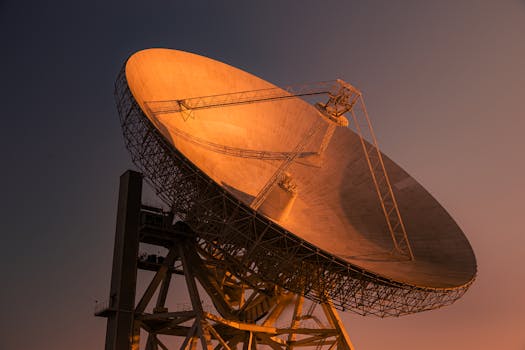Satellite Telecommunications 2023: Key Developments and What They Mean for the Industry

Satellite Telecommunications 2023: Key Developments and What They Mean for the Industry
Satellite Telecommunications 2023 has been a remarkable year for the satellite telecommunications industry, with numerous breakthroughs and innovations that have revolutionized the way we communicate and access data. The industry has experienced significant growth, driven by advancements in technology, increasing demand for satellite-based services, and the expanding need for global connectivity. In this article, we will delve into the key developments that have shaped the industry in 2023 and explore their implications for the future.
The satellite telecommunications industry has been at the forefront of innovation, with companies like SpaceX, Amazon, and OneWeb launching constellations of satellites to provide global internet coverage. These constellations, comprising thousands of small satellites, have transformed the way we access data and communicate, enabling fast and reliable internet connectivity even in remote and underserved areas. The development of these constellations has also sparked a new era of competition in the industry, with companies vying to provide the best services and coverage.
Advancements in Satellite Technology
One of the significant developments in the satellite telecommunications industry in 2023 has been the advancement in satellite technology. The development of more efficient and powerful satellites has enabled the provision of faster and more reliable internet services. Satellites like the SpaceX Starlink and Amazon Kuiper Systems have been designed to provide high-speed internet connectivity, with speeds of up to 1 Gbps. These satellites have also been equipped with advanced technologies like phased arrays and beamforming, which enable them to provide more precise and targeted coverage.
The advancement in satellite technology has also led to the development of new services and applications. For instance, the use of satellites for IoT (Internet of Things) connectivity has become increasingly popular, with companies like Orbcomm and Globalstar providing satellite-based IoT services. These services enable the connectivity of devices and sensors in remote and underserved areas, opening up new opportunities for industries like agriculture, transportation, and energy.
Increasing Demand for Satellite-Based Services
The demand for satellite-based services has been increasing rapidly in 2023, driven by the growing need for global connectivity and the expanding use of satellite technology in various industries. The COVID-19 pandemic has also accelerated the demand for satellite-based services, as people have become more reliant on remote communication and connectivity. The use of satellites for telemedicine, online education, and remote work has become increasingly popular, with companies like Telemedicine and RemoteMD providing satellite-based telemedicine services.
The increasing demand for satellite-based services has also led to the growth of the satellite telecommunications industry, with new companies and investors entering the market. The industry has witnessed significant investments, with companies like SpaceX and Amazon raising billions of dollars to fund their satellite constellations. The growth of the industry has also created new job opportunities, with companies hiring professionals with expertise in satellite technology, engineering, and telecommunications.
Implications for the Industry
The key developments in the satellite telecommunications industry in 2023 have significant implications for the future of the industry. The advancement in satellite technology and the increasing demand for satellite-based services are expected to drive the growth of the industry, with new services and applications emerging. The industry is also expected to become more competitive, with companies vying to provide the best services and coverage.
The satellite telecommunications industry is also expected to play a critical role in bridging the digital divide, providing internet connectivity to remote and underserved areas. The use of satellites for IoT connectivity is also expected to open up new opportunities for industries like agriculture, transportation, and energy. However, the industry also faces challenges like regulatory hurdles, spectrum allocation, and the need for sustainable and environmentally friendly practices.



